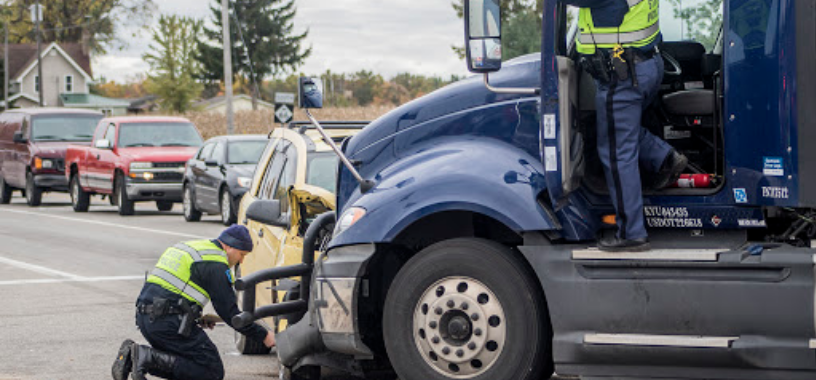
Some people consider tractor trailer trucks the bullies of the open road. If you’ve ever had one of these big rigs bear down on you while you’re driving up Route 15-North, you might agree. But upon closer examination, more often than not, accidents between tractor trailers and automobiles are the fault of the latter. In fact, research from the U.S. Department of Transportation, the National Highway Traffic Safety Administration, the Federal Motor Carrier Safety Administration, and the Federal Highway Administration, says that car drivers are at fault nearly 80 percent of fatal accidents involving tractor-trailers.
Even though getting into a car accident with an 18-wheeler is very likely to result in death for anyone driving a car, truck safety training is rarely covered in Driver’s Education classes.
So, educate yourself. Keep yourself and your passengers safe by practicing these five tips for sharing the road with tractor trailers.
- Give Truckers Plenty of Room. Whether you’re passing or driving behind an 18-wheeler, always give them lots of room. These trucks are big, heavy, difficult to maneuver, and due to their expansive surface area, they are also likely to get blown around by the wind– resulting in swerving and unexpected drifts into the next lane over. Big rigs are also prone to tire blowouts. The worst place to be when heavy shards of tire rubber explode onto the highway is tucked up next to the semi-truck’s cab driving 70 mph. Anticipate the danger and steer clear.
- Respect the Tonnage. Tractor-trailers typically carry 80,000 pounds or more, making them roughly 30-times heavier than most passenger vehicles. It takes a fully-loaded semi-truck 4 percent longer to stop than it takes the average car or SUV. Going 65 mph in ideal road conditions, that means an 19-wheeler will take 525 feet to come to a complete stop. Think about that before you decide to slide in front of a semi-truck going downhill, especially in the rain.
- Account for Blind Spots. You know your car has blind spots, but did you know a semi-truck has blind zones, often called “no zones”? A truck’s front blind zone extends 20 feet from the front of a tractor trailer, particularly on the passenger side, while the rear blind zone extends 200-feet behind the vehicle. That means that truck drivers can’t see your car until you are at least 20 feet in front of them or 200-feet behind them. Move through these zones as quickly as you safely can. A good safety check is to look for the truck driver’s face in the side mirrors. If you can see their face, then the driver can see you.
- Pass Quickly & Carefully. When you must pass, remember the passenger side of a semi-truck is a huge blind zone. Always pass on the left, veering as far to the outside part of the lane as you can in case the truck swerves or drifts. Pass quickly, and don’t cut back in too soon. Remember, it can take a fully-loaded truck the length of two to three football fields to come to a complete stop.
- Never Pass a Turning Truck. Despite the sign on almost all 18-wheelers warning that “This Truck Makes Wide Turns,” drivers attempting to pass a turning semi are one of the most frequent causes of accidents between cars and trucks. Be patient, wait for the driver to complete the turn, and then resume driving.
Roads in and around Frederick, Maryland are busy thoroughfares that are now handling far more traffic than they were ever designed to– which can make driving riskier, especially around fully loaded tractor trailers and other speeding vehicles. Avoid distractions, keep your eyes on the road, and drive safely for the conditions. Follow these “share the road” guidelines and do your part to keep yourself and your passengers safe.

